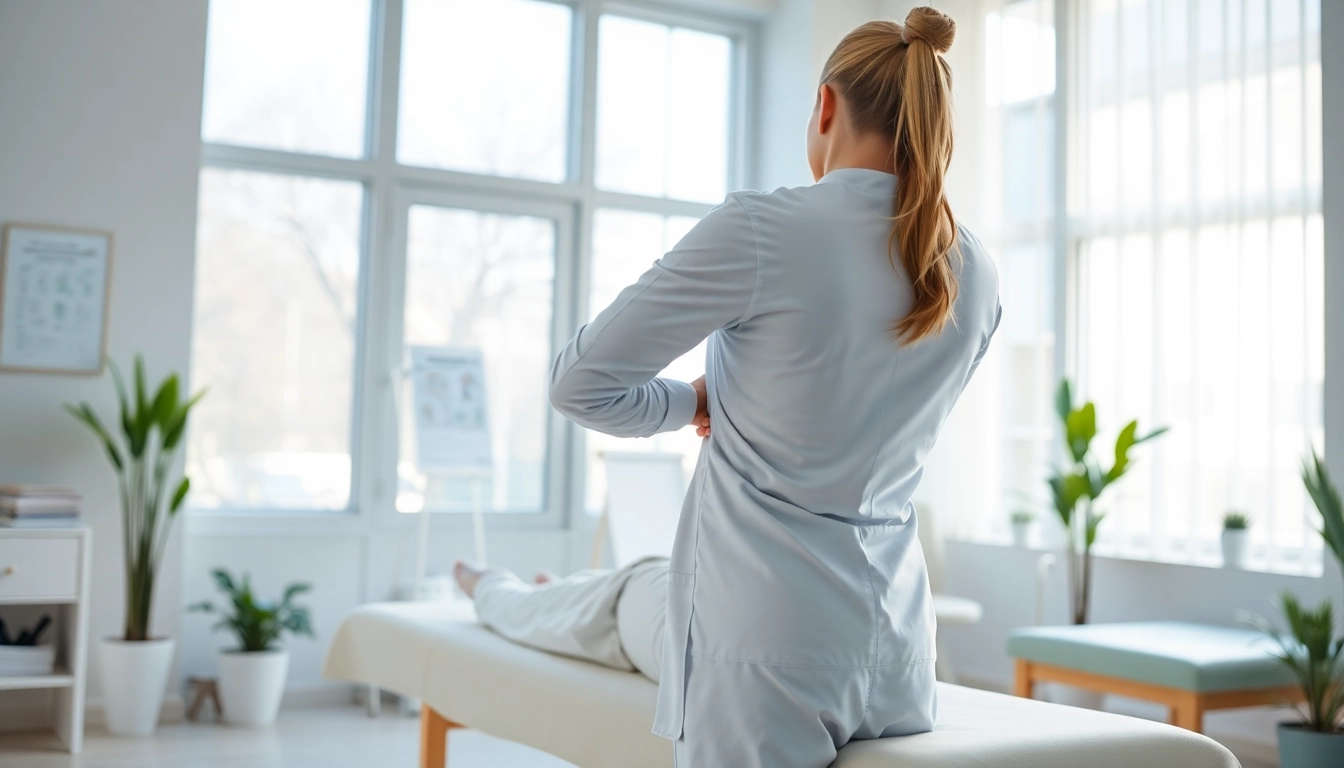What is Anxiety?
Understanding the Definition of Anxiety
Anxiety is often perceived as a feeling of fear, dread, or unease, characterized by heightened alertness to potential threats. This emotional response can manifest physically, with symptoms such as rapid heartbeat, sweating, or restlessness. For many, anxiety is a typical reaction to stress, which can surface during significant life events like facing a challenging situation at work or preparing for an important test. While occasional anxiety is a natural human experience, it can become problematic when it escalates into something more severe, such as chronic anxiety or anxiety disorders. To gain a deeper understanding of anxiety, one can explore its various dimensions including types, symptoms, and impacts on daily life. Discussing anxiety can reveal insights into its complexities.
Types of Anxiety Disorders
Anxiety is not a one-dimensional experience; it includes a range of distinct disorders that exhibit various symptoms and underlying causes. The most prevalent types of anxiety disorders include:
- Generalized Anxiety Disorder (GAD): Characterized by excessive, uncontrollable worry about everyday issues, leading to significant distress and impairment in daily functioning.
- Panic Disorder: Involves recurrent unexpected panic attacks, which are sudden surges of intense fear or discomfort that trigger severe physical symptoms such as heart palpitations, shortness of breath, or dizziness.
- Social Anxiety Disorder: Marked by overwhelming anxiety in social situations, leading individuals to avoid gatherings or interactions to prevent embarrassment or scrutiny.
- Specific Phobias: Intense fear of specific objects or situations, leading to avoidance behavior that can significantly disrupt daily life.
- Obsessive-Compulsive Disorder (OCD): Involves persistent, intrusive thoughts (obsessions) and repetitive behaviors (compulsions) performed to alleviate anxiety associated with these thoughts.
- Post-Traumatic Stress Disorder (PTSD): Develops after experiencing a traumatic event and is characterized by flashbacks, nightmares, and severe anxiety tied to the distressing memories.
Common Symptoms of Anxiety
The symptoms of anxiety can vary significantly among individuals and depend on the type of anxiety disorder diagnosed. Common symptoms include:
- Physical Symptoms: These may include increased heart rate, sweating, shaking, fatigue, difficulty sleeping, and gastrointestinal issues.
- Mental Symptoms: These often encompass persistent thoughts of worry, racing thoughts, difficulty concentrating, and a sense of impending doom.
- Behavioral Symptoms: This could involve avoidance of specific situations that trigger anxiety, changes in eating habits, or disruptions in social interactions.
Causes of Anxiety
Psychological Factors Influencing Anxiety
Psychological contributors to anxiety often stem from patterns of thought that amplify feelings of unease. Cognitive distortions such as all-or-nothing thinking, catastrophizing, or excessive focus on the negative can exacerbate anxious feelings. A deep-rooted fear of failure or rejection can drive individuals to overanalyze situations, producing a feedback loop that intensifies anxiety. Therapy techniques, such as cognitive-behavioral therapy (CBT), can be effective in addressing these cognitive patterns by promoting healthier thinking strategies.
Biological and Genetic Contributions
Research suggests that genetics can play a significant role in the development of anxiety disorders. Individuals with a family history of anxiety may be more susceptible to developing the condition, indicating a hereditary component. Neurotransmitters, which are chemicals in the brain that facilitate communication between neurons, such as serotonin and dopamine, also influence mood and anxiety levels. Imbalances in these neurotransmitters can lead to heightened anxiety symptoms.
Environmental Triggers of Anxiety
Environmental factors significantly shape an individual’s experience of anxiety. Traumatic experiences, chronic stress from work or relationships, and significant life changes—such as moving, changing jobs, or loss of a loved one—can all trigger chronic anxiety. Furthermore, systemic issues like socio-economic variables, cultural expectations, and stigma surrounding mental health can serve as significant environmental stressors contributing to anxiety disorders.
Recognizing Symptoms of Anxiety
Physical Signs of Anxiety
Recognizing the physical manifestations of anxiety is crucial for timely management. Symptoms can range from mild to severe and may include:
- Increased heart rate and palpitations
- Shortness of breath or hyperventilation
- Trembling or shaking
- Muscle tension, headaches, or digestive issues
- Excessive sweating and nervous energy
Mental and Emotional Indicators
Anxiety does not solely manifest physically; mental and emotional symptoms are equally important for recognition. These may encompass:
- Chronic worry or rumination
- Restlessness and irritability
- Difficulty concentrating or indecisiveness
- Feelings of apprehension or dread
- Emotional fatigue or detachment
Behavioral Impacts of Anxiety
Anxiety can also significantly influence behavior, often causing individuals to engage in avoidance strategies or adopt maladaptive coping mechanisms. Common behavioral symptoms may include:
- Withdrawal from social situations
- Avoidance of specific triggers or environments
- Impact on work or educational performance
- Changes in routine or lifestyle
Effective Treatment Options for Anxiety
Cognitive Behavioral Therapy (CBT)
CBT is considered one of the most effective treatment options for anxiety disorders. It focuses on modifying dysfunctional thoughts, beliefs, and behaviors that contribute to anxiety. By identifying and challenging these negative patterns, individuals gain tools to manage their anxiety more effectively. Therapy sessions may include exposure techniques, where patients are gradually exposed to anxiety-inducing situations in a controlled manner until their fear diminishes.
Medication Choices for Anxiety Management
For some individuals, medication may be a necessary component of anxiety management. Common classes of medications include:
- Selective Serotonin Reuptake Inhibitors (SSRIs): Widely prescribed for their effectiveness in managing anxiety symptoms by balancing serotonin levels.
- Serotonin-Norepinephrine Reuptake Inhibitors (SNRIs): These address both serotonin and norepinephrine levels, potentially offering additional relief for some patients.
- Benzodiazepines: Typically prescribed for short-term relief due to their sedative effects, although they carry risks of dependence.
- Buspirone: An anti-anxiety medication that is not as sedative as benzodiazepines and is often used for chronic anxiety.
Alternative Approaches to Alleviate Anxiety
In addition to conventional treatments, many individuals may benefit from alternative or complementary approaches. Some effective methods include:
- Mindfulness and Meditation: Practicing mindfulness helps individuals focus on the present moment and decreases rumination, a common contributor to anxiety.
- Exercise: Regular physical activity can decrease symptoms of anxiety by releasing endorphins, which act as natural mood lifters.
- Nutrition: A balanced diet rich in nutrients can improve brain health and overall mood, potentially reducing anxiety symptoms.
- Aromatherapy: Essential oils such as lavender and chamomile have been found to promote relaxation and diminish anxiety levels.
Self-Help Strategies for Managing Anxiety
Mindfulness and Relaxation Techniques
Implementing mindfulness and relaxation strategies can empower individuals to manage their anxiety more effectively. Techniques may include:
- Deep Breathing Exercises: Breathing deeply can activate the parasympathetic nervous system, reducing heart rate and inducing a state of calmness.
- Progressive Muscle Relaxation: This involves sequentially tensing and relaxing muscle groups to diminish physical tension associated with anxiety.
- Guided Imagery: Visualizing calming scenes or situations can help distract the mind from anxious thoughts and create a sense of peace.
Establishing a Support Network
Having a supportive community is crucial for individuals managing anxiety. Building a network can involve:
- Reaching out to friends or family for support
- Joining support groups or online communities for shared experiences
- Participating in group therapy sessions to foster social connections and shared learning
Lifestyle Changes to Reduce Anxiety Levels
Making positive lifestyle changes can significantly affect anxiety management. Consider implementing the following changes:
- Regular Exercise: Aim for at least 150 minutes of moderate aerobic activity each week.
- Sleep Hygiene: Prioritize getting 7-9 hours of quality sleep each night, as sleep is essential for emotional regulation.
- Limit Caffeine and Alcohol: Both substances can exacerbate anxiety symptoms and disrupt sleep patterns.
- Maintain a Schedule: Establishing daily routines can provide structure and stability, making daily challenges more manageable.



